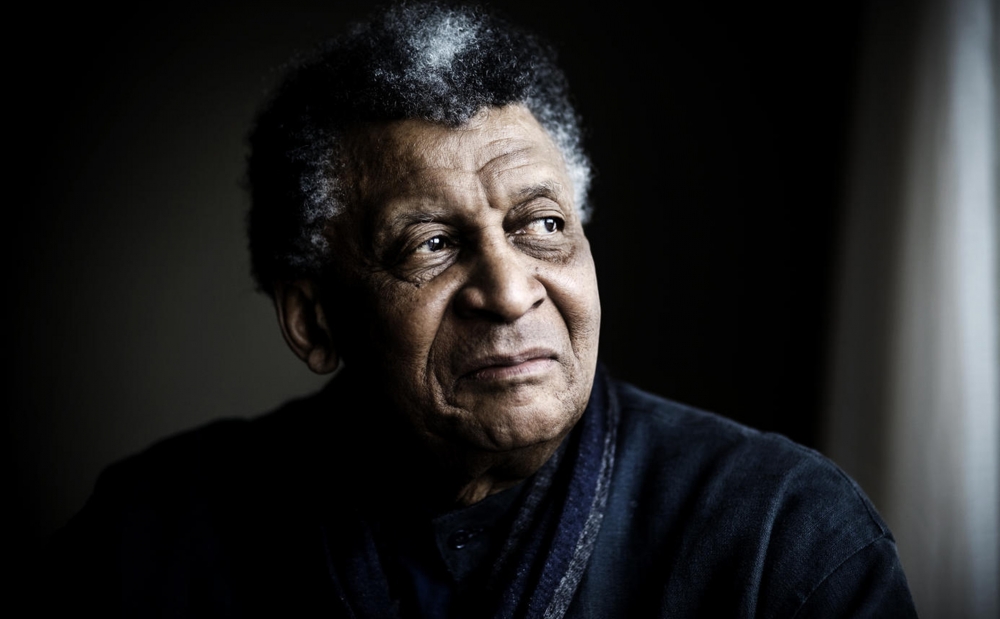How does one pass down knowledge that resists the deteriorating effects of time? With a soft spoken, low and wisened voice, Abdullah Ibrahim, a South African pianist and composer, responded to creative writing professor Nathaniel Mackey.
In the “Talking Music: A Life in Jazz” talk on Oct. 15, Mackey and Ibrahim discussed the sources of Ibrahim’s influences and the overarching themes of his work. Abdullah Ibrahim grew up in the impoverished, predominantly black section of Cape Town, South Africa during the Apartheid. As Cape Town grew to be a whites-only region, many residents were forcibly removed. The increasingly strict apartheid laws resulted in a crackdown on music, particularly jazz, which symbolized resistance. Musicians were harassed and clubs were closed, forcing many musicians, including Abdullah Ibrahim, into exile. In 1962, Ibrahim fled South Africa. Only six years later, he converted to Islam.
This transition in Ibrahim’s life marked the beginning of a search for harmony, self understanding and identity, themes that resound strongly throughout Ibrahim’s music, from traditional African songs to contemporary Western jazz styles. Ibrahim gradually developed audiences in the United States, Europe and Japan, making him a sort of celebrity in Cape Town. He became known for creating peaceful, meditative and spiritual music. Despite growing up in a racially tense environment and his performances at historical events such as the presidential inauguration of Nelson Mandela, Abdullah Ibrahim cited Thelonious Monk as one of his most significant influences.
“When I first met Monk, I thanked him for the inspiration he gave,” Ibrahim said. “He told me you’re the first one to tell me this. I then realized that he was not very accepted in the jazz community. But his music was so complex and yet simple.”
Monk, the second most recorded jazz composer, whose work skillfully incorporates dissonance and melodies, created music that stood apart from mainstream jazz. While other jazz artists, including Ibrahim, looked up to his work, the complexity of Monk’s music was not fully accepted into society until years later. The music itself incorporated unique melodies, harmonies, rhythm and space. Characterized by almost jarring combinations of rhythm and tone that contrasted smooth 20th century jazz music, Monk’s music possessed a use of space that embodied, as Ibrahim put it, the “essence of music.”
“There has been a severance between ancient tradition and now so we have to reestablish this connection,” Ibrahim said.
In bridging this gap, Ibrahim has created works with Japanese philosophical influences. Ibrahim recently performed jazz in the Kamigamo Shrine in Kyoto, Japan, a place that embodies his zen philosophy and belief in the concept of “budo.”
The inherent nature of budo is not “martial arts,” which is the word’s straight-forward definition. Rather Ibrahim said the Japanese calligraphy “budo” means to stop fighting and encapsulates the “principle of challenging the self” to understand one’s self and one’s relation to others and the universe.
Through his music, Ibrahim addresses repairing the human spirit, parallel to his own experiences of understanding himself after suffering the tumultuous social environment in Cape Town. To repair the human spirit, Ibrahim explained the idea of breaking down the ego. While detailing his performance and experiences in Japan, he specifically recalled an artist whose work comprised photos of garbage while riding a bike at night in Kyoto. He drew on finding meaning from something that society perceives as meaningless. Meaning is ultimately subjective, so does an individual’s life have a separate, distinct purpose? These existential implications and inherent emptiness of being are the foundation of Ibrahim’s music.
“The principal of budo is the way we play the music,” Ibrahim said. “We don’t see anything in separation with ourselves or the universe.”
Ibrahim’s music, however, is not solely based on emptiness. He spoke of an energy that exists within budo, parallel to the Chinese concept of chi.
“We find this energy no matter where we are,” Ibrahim said. “We do not realize how far and deep the music affects us.”
According to Ibrahim, the theme of repairing the human spirit and soul closely follows the Zen doctrine of Buddha-nature, which claims that people have the ability to be awakened and to acquire an enlightened and awakened state. Only after reaching the state of emptiness in which ego and consciousness melt away can one reach a state of calm and awareness. The Zen concept of breath, tying back into in energy, is also prominent throughout the pieces. Ibrahim emphasized that the concept of his music was the “concept of breath” and that “breath is connected to memory.”
Ibrahim’s music is unique in that it combines elements of East Asian buddhist philosophies, Western style jazz and his own life experiences, sufferings and inspiration in South Africa. But more than that, he evokes deeply rooted meaning that extends into history through an innately free and liberating voice that is jazz.
